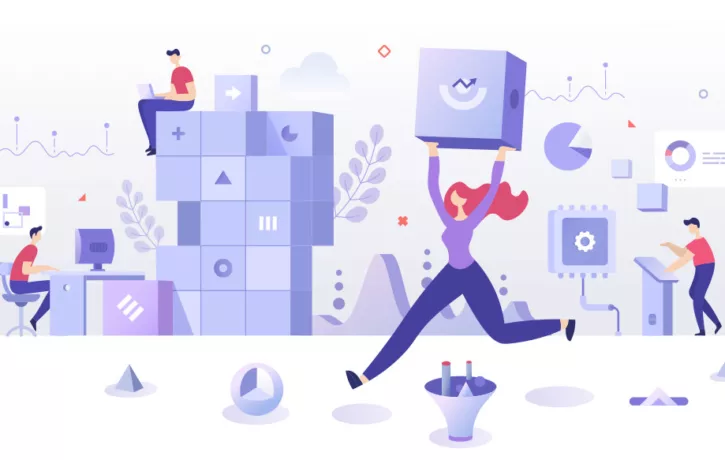The evolution of workplace technology has turned almost every traditional training method on its head. Despite this, we still see many training managers clinging to outdated modes of learning.
Historically, organizations could follow traditional methods that would help them achieve employee training goals, such as classroom sessions, LMS modules and other in-person meetings. But today, an “onboarded employee” means more than understanding one’s job duties or their impact on the organization and the company’s vision.
As the pace of digital transformation picks up, those methods and measurements of successful training have quickly become outdated.
The near-constant flow of new technology, updates from the cloud, and new processes demand continuous training and re-learning.
What used to be a one-time training boot camp is now a never-ending game of catch-up. When change is constant, you need a training infrastructure in place that will help you meet your goals.
Here’s where to start.
Foster continual learning
To stay ahead of the change curve, start by creating an environment that fosters constant learning. When employees feel supported to learn new things, they will face change with confidence and ease.
Training and learning are never complete in a digital workplace, which is simultaneously exciting and daunting. This does not mean that any one person cannot master their role. Rather, there are always new skills to learn.
By fostering a culture of adaptability through change management, your employees will be more open to learning new things and utilizing new processes or tools required to excel.
Dive Deeper: The Employee Training Manifesto for Enhanced Productivity
Make digital adoption a top priority
Ideally, all employees can use all of the digital tools and apps at their disposal to their fullest capability. But 60% of US-based companies say the lack of certain skills in their local labor markets prevents them from successfully implementing new technology.
Despite some misconceptions, the ability to use technology does not always depend on having a specific set of skills.
With the right digital support tools, even employees with zero prior training on a platform will be able to complete processes easily. This is especially true when you implement the software in tandem with a digital adoption platform.
Digital adoption platforms democratize the ability to use software. Through localized and role-specific guidance and engagement, the platform does all of the training work for you. Forget worrying if your workforce has certain skills to pick up new technology — the platform ensures you will meet your modern employee training goals of digital adoption and greater productivity.
Define contextual learning as a “must-have” feature
According to the 2018 Training Industry Report, 41% of companies plan to purchase a web-based learning tool or system in 2019.
But when it comes to selecting the right tool, many people don’t know which features and capabilities are most important.
The most important elements to look for include:
- Contextual learning
- On-screen navigational guidance
- Real-time support
- Customization
- Proactive interventions
- Insights on user behavior
Digital solutions that enable contextual learning use algorithms to assess a broad range of defined contextual factors to provide tailored, real-time support in the moment of need. Contextual learning, plus the ability to create customized educational content and view the user journey ensures each trainee has all of the necessary support to get onboarded fast.
Rather than going back and forth from their desks to a classroom session, such digital learning tools enable learning in the flow of work. They reduce the need for re-hiring for software knowledge and enable your workforce to be fully digitally adept.
Like what you’re reading? Subscribe to the blog for fresh insights delivered right to your inbox!
Provide training that’s designed to keep up
Technology is constantly changing, and so are the methods to train users how to use it. With the right tools that are designed to cater to users’ needs, you’ll empower employees to exceed all of their training goals.
WalkMe’s Digital Adoption Platform (DAP) transforms the user experience in today’s overwhelming digital world. Using artificial intelligence, engagement, guidance, and automation, WalkMe’s transparent overlay assists users to complete tasks easily within any enterprise software, mobile application or website. Discover how a DAP can revolutionize your business.

